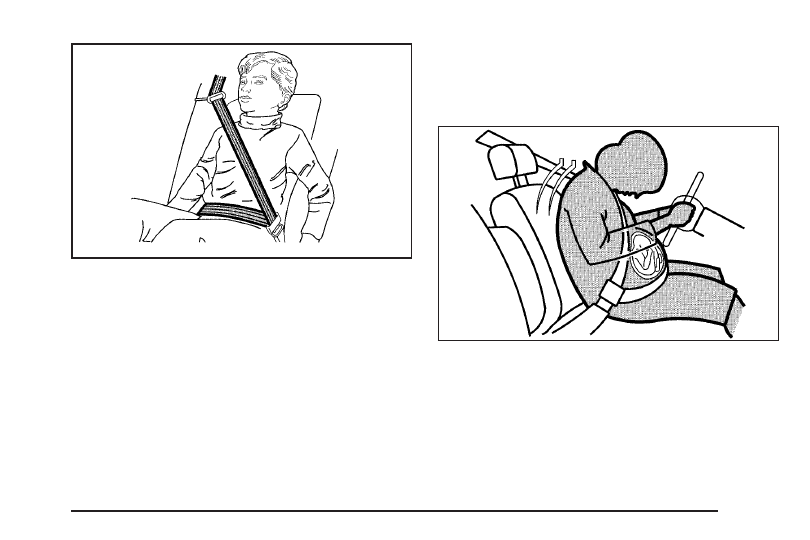Saturn Aura Hybrid (2009 year). Manual - part 3

4. Buckle, position, and release the safety belt as
described previously in this section. Make sure
that the shoulder belt crosses the shoulder.
To remove and store the comfort guide, squeeze the
belt edges together so that the safety belt can be
removed from the guide. Pull the guide upward to
expose its storage clip, and then slide the guide onto
the clip. Turn the guide and clip inward and slide them in
between the seatback and the interior body, leaving
only the loop of the elastic cord exposed.
Safety Belt Use During Pregnancy
Safety belts work for everyone, including pregnant
women. Like all occupants, they are more likely to be
seriously injured if they do not wear safety belts.
A pregnant woman should wear a lap-shoulder belt, and
the lap portion should be worn as low as possible,
below the rounding, throughout the pregnancy.
The best way to protect the fetus is to protect the
mother. When a safety belt is worn properly, it is more
likely that the fetus will not be hurt in a crash. For
pregnant women, as for anyone, the key to making
safety belts effective is wearing them properly.
1-29